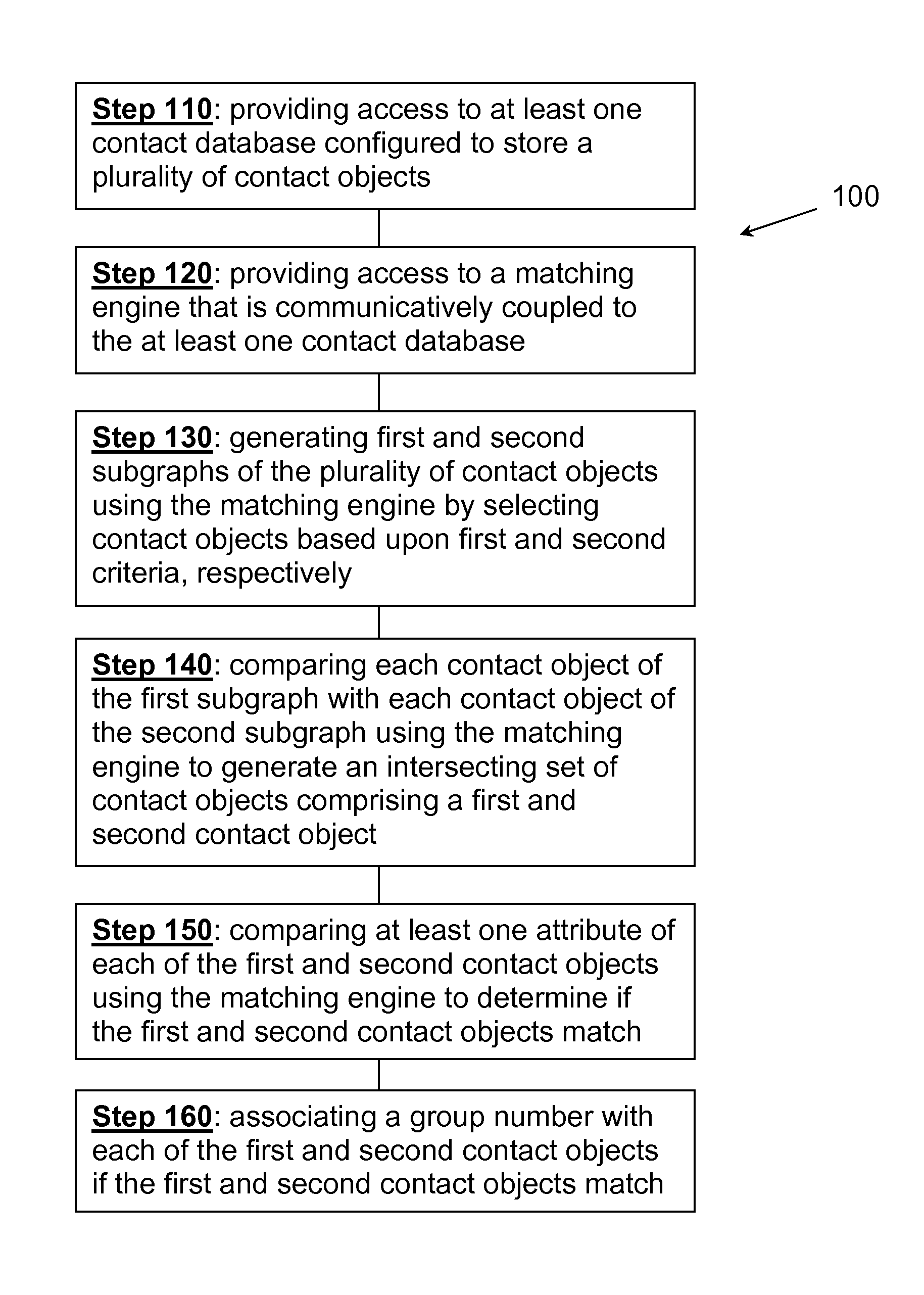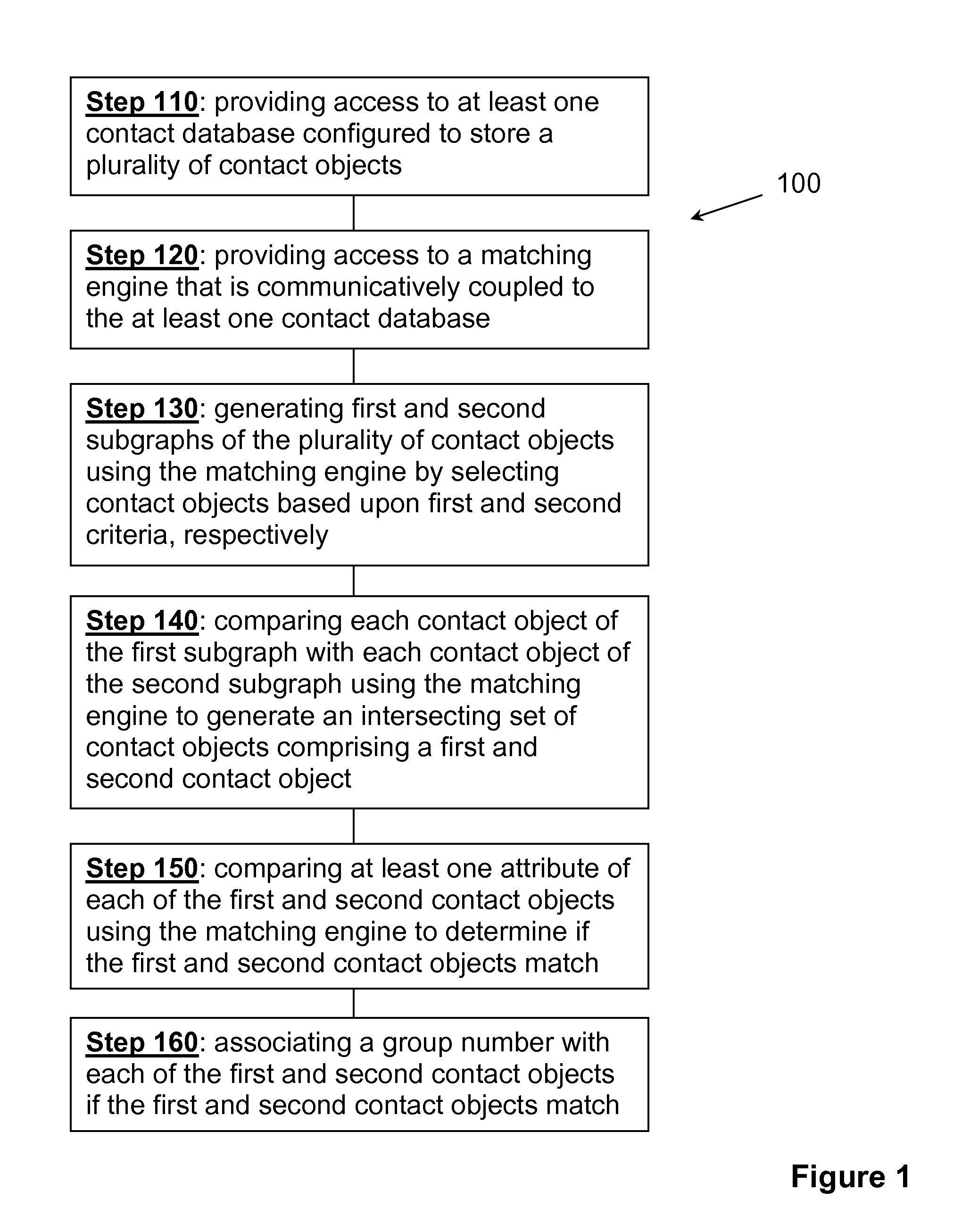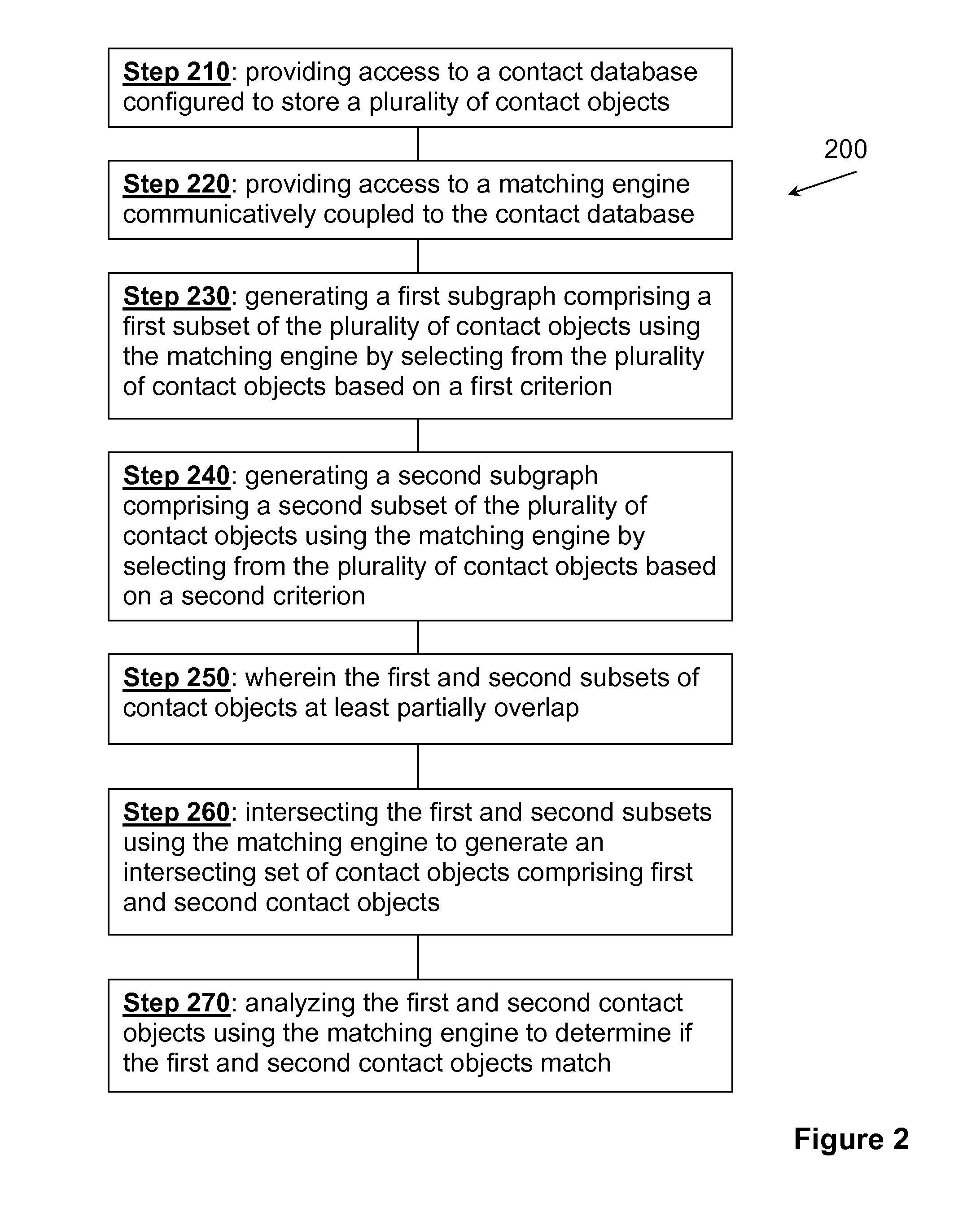Systems and Methods for Clustered Matching of Records Using Geographic Proximity
- Summary
- Abstract
- Description
- Claims
- Application Information
AI Technical Summary
Benefits of technology
Problems solved by technology
Method used
Image
Examples
example
[0042]The following discussion is based on the below data set:
#First NameLast NameAddressCityStateLatitudeLongitude1.JohnSmith82 Salem StBostonMA42.36371−71.0558332.JonSmith36 High StBostonMA42.354136−71.0552313.BobSmith1634 Beacon StBrooklineMA42.33955−71.1356254.RobertJohhnson390 Needham StNewtonMA42.307091−71.2164755.MaryJones145 Central StWellesleyMA42.300192−71.2667856.MaryJones9 Worcester StNatickMA42.304363−71.326819
Step 1: Subgraph Creation
[0043]In this example, two subgraphs are created, one using the criterion “first name,” and the other using the criterion “last name.” The first subgraph will consist of:
First NameRecord(s)John1Jon2Bob3Robert4Mary5, 6
[0044]The second subgraph will consist of:
Last NameRecord(s)Smith1, 2, 3Johnson4Jones5, 6
Step 2: Subgraph Distillation
[0045]During subgraph distillation, any matching entries within each subgraph are combined. The rules governing distillation are preferably set by the user. In this example, we will assume that the user elected...
PUM
 Login to View More
Login to View More Abstract
Description
Claims
Application Information
 Login to View More
Login to View More - R&D Engineer
- R&D Manager
- IP Professional
- Industry Leading Data Capabilities
- Powerful AI technology
- Patent DNA Extraction
Browse by: Latest US Patents, China's latest patents, Technical Efficacy Thesaurus, Application Domain, Technology Topic, Popular Technical Reports.
© 2024 PatSnap. All rights reserved.Legal|Privacy policy|Modern Slavery Act Transparency Statement|Sitemap|About US| Contact US: help@patsnap.com










